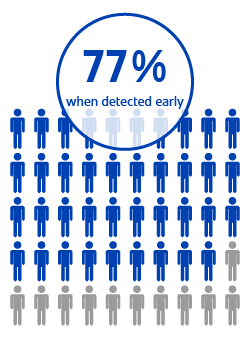Video:
Learn more about HPV-induced cancer and how to detect these cancers early
HPV is very common and often remains unnoticed
HPV infections rank among the most common sexually transmitted diseases. More than 75% of adults in industrial countries get infected by HPV in their lifetime, because the virus spreads easily, mainly via skin or sexual contact. Once infected, the virus can persist in the human body for up to 30 years without causing symptoms.
HPV16 has high oncogenic potential
Mainly HPV 16, with its high oncogenic potential, can induce various cancer types, such as head and neck, cervical, vaginal, vulvar, penile or anal cancer.
Incidence rates show increase in head and neck tumours
Currently, HPV-induced tumours are responsible for more than 5% of all tumours or more than 630.000 newly diagnosed tumours per year. Trends in cancer incidence are recorded in the statistics of the CDC and IARC/WHO and show that HPV-induced head and neck cancers in particular have surpassed cervical cancer cases in many countries, e.g. in the US and Europe.
Early detection is key to treatment success and survival rate
In contrast to most other cancers, HPV-induced cancers are easier to treat and result in better patient outcomes when detected during the early stages. Staging at the time of diagnosis is decisive for the choice and severity of treatment, e. g. surgical removal, radio-chemotherapy or immunotherapy. However, the majority of HPV-induced cancers are detected late, when metastases have already occurred.
5 Year Survival Rate
Data based on statistics of National Cancer Data Base, published by Seattle Cancer Care Alliane, www.seattle.ca.org, available October 2019


